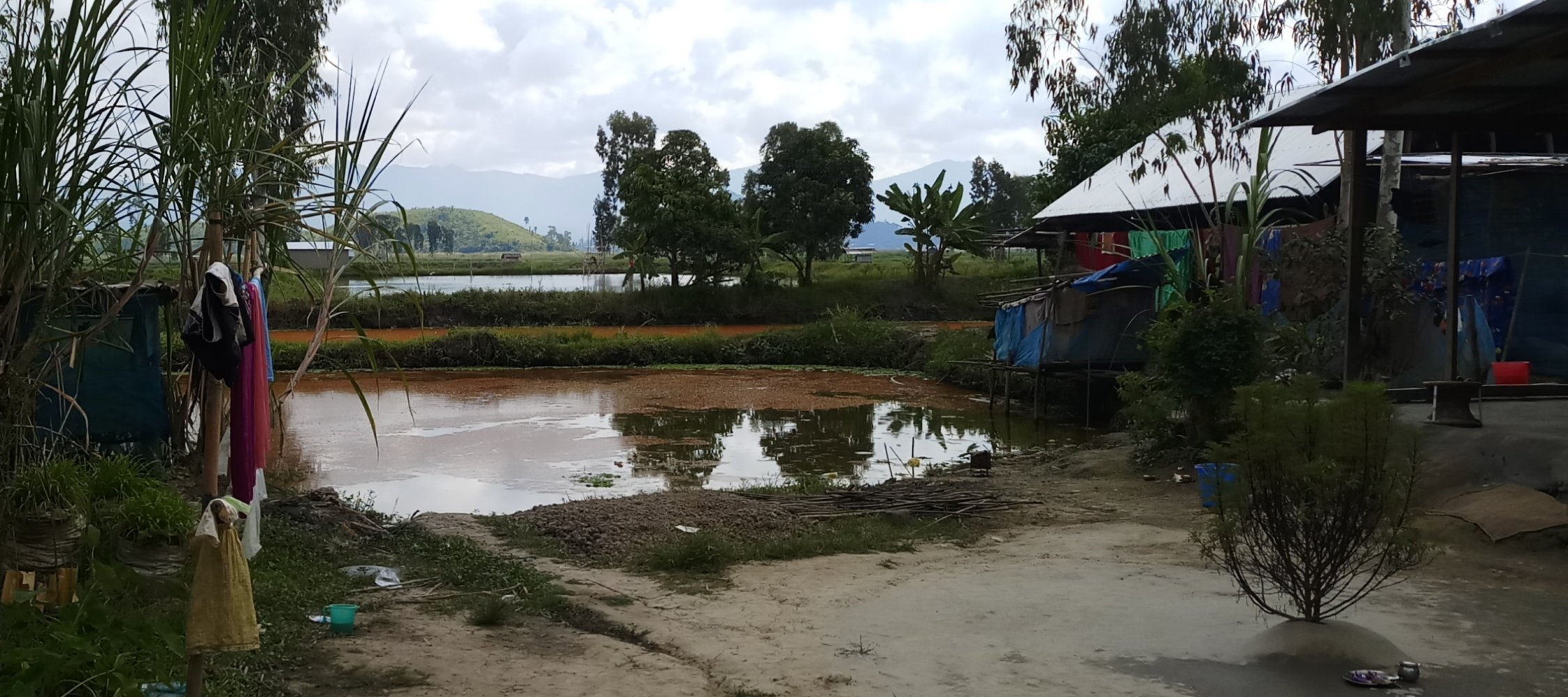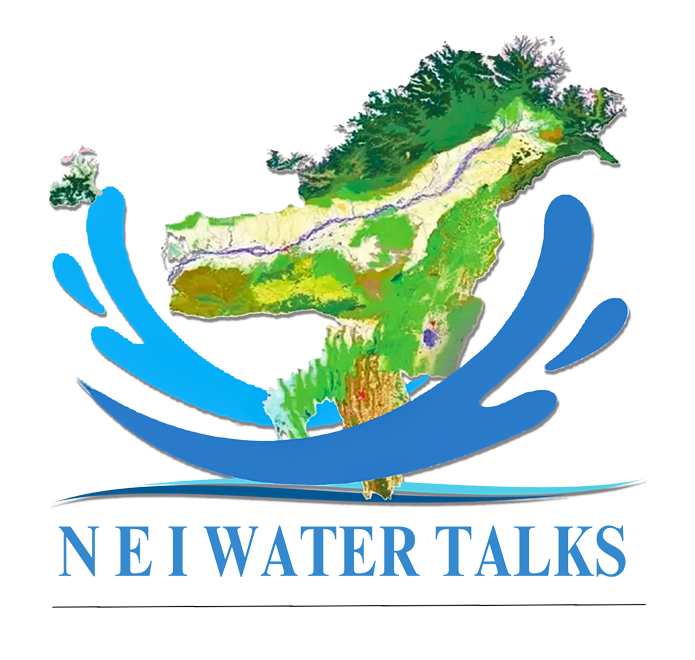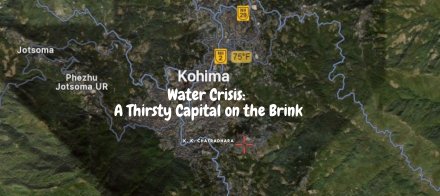 |
As you drive along the meandering Manipur river beyond the Ithai Barrage, you reach the Nongmaikhong village, located beside Pumlen Pat, a wetland measuring over 2,000 acres said to be the second important fresh water lake after Loktak. ‘Pat’ in Manipuri means wetland. Much has been written about the irreparable impact of the Ithai Barrage on the Loktak lake, but very little has been discussed and highlighted about the equally devastating effects on the Pumlen lake and its surrounding villages.
Wetlands play a unique role in regulating and maintaining natural water flow; it also supports a rich bio-diversity, providing numerous ecosystem services to aquatic fauna and flora as well as to human life. The sustenance of human societies lies in the wise use and sustainable management of these highly fertile ecosystems.1 Pumlen Pat is a conjoined lake formed by Khoidumpat in the north, Lamjaopat in the north-east, and Pumlen Pat, the main basin in the south. The deep water area lies in the main basin, whereas Khoidumpat and Lamjaopat are the marshy areas. Pumlen Pat is fed with five major streams from different directions. Villagers used to grow different types of rice like the Tao-thabi, Anganphou, Tumai, Moirangphou, Kakchengphou, etc., and gathered a good harvest. During the rainy season, it becomes a huge lake along with the adjoining water bodies, but in the dry season, these areas are efficiently used for cultivating rice.
Fishing is an important part of the economic activities in the surrounding area and is a vital source of protein for the local diet. It is a shallow weed-infested lake with two-third of its water surface covered with a variety of vegetation, locally known as Phoom or Phumdi. However, the locals have reported of drastic changes in the ecosystem of the Pumlen Lake since the commissioning of the Loktak Hydel project, which uses the lake as a secondary reservoir.2
Nongmaikhong and Arong Nongmaikhong are two rural villages separated by the Manipur river. Arong Nongmaikhong comes under the Hiyanglam Assembly constituency, and Nongmaikhong falls under the Thanga Assembly constituency. While visiting these areas, this writer interviewed several women and men from the Yangbi leikai (locality) or Nongmaikhong Awang leikai of the larger Arong Nongmaikhong gram panchayat (GP). The Arong-Nongmaikhong GP has a population of about 10,000. This story is essentially based on information gathered in the course of a series of conversations with people living around Mayai and Awang leikai.
The village of Nongmaikhong gets their water from the Manipur river. The river is the lifeline of the villages settled along the river. Developmental works have not helped the age-long management of water much but made the situation in this upstream village hard. The Meitei had a separate text called tutenglon (science of water management) and the villagers of these areas paid taxes to the erstwhile kings of the ancient kingdom. Villagers narrated the story of King Selungba riding a white majestic pony to the village and collecting the tax.
Impact of Ithai Barrage
The river Manipur drains out water to the neighbouring country Myanmar. The Ithai Barrage (commissioned in 1983) was built as a part of the Loktak Hydro Power Project to maintain the required water level by blocking the outlet of waters of the Manipur river to run its massive turbine and pump and generate electricity. The project has diverted the normal water flow to Bangladesh, instead of Myanmar, through the river Barak.
In the name of generating electricity, the Loktak project had overlooked, while building the barrage, a lot of vital issues that impacted on the natural cycle of wetlands and the people who have been dependent on it. The seasonal inundation of agricultural land has affected not only the local farmers and fishers of the land but also the overall production of rice, fish and other aquatic life forms. Villagers of Arong Nongmaikhong used to till the vast Pumlen Pat in front of their settlements. Pumlen Pat was the only source of livelihood for these far-flung villages in southern Manipur. But the construction of the barrage at Ithai village has impacted Pumlen Pat by permanently disrupting its seasonal renewal and rejuvenation process. For example, during the dry months, when the water drained out to the Manipur river and the water level receded, the villagers would cultivate paddy. Production was good as the land was fertile, water from all directions brought nutrients to the wetland. But after the barrage came up everything changed; production and cultivation of rice is now a story of the past narrated by the elders to the younger generations.
Moreover, the Manipur river was a narrow river, but after the construction of the barrage the banks have widened significantly due to periodic flash floods that eroded the sand-laden river banks. The ever-flowing river has now stagnated and villagers complained of getting infections and rashes from the use of water or soon after taking a bath in this water. It never happened before, they claimed. The river has also lost its natural colour; it looks brown-muddy in colour throughout the year. The water had a distinction between the summers and winters but now doesn’t have any seasonal differences. Fish from the Chindwin-Irawaddy basin would swim up the Manipur river and breed in the connecting nearby catchment areas. Sareng, Pengba, Ngaton, Khabak, Ngara, Ngatin, etc were abundant during the breeding season. Villagers used to catch enough fishes for consumption and sale. That enabled them to earn some money. The barrage blocked the process of natural breeding and restocking of fish, thereby affecting the quantity of catch and dwindling of income of the fisher families.
Who plays a greater role in the household?
The Ithai Barrage has also triggered changes in the pat ecosystem and land use patterns. As the paddy cultivation declined in the pat areas, people began to dig ponds for captive fishery. The gender role in water management also changed. While women are mainly responsible for securing water for household needs, including drinking water, men are mostly engage in the fish ponds or the lake; men accumulate and women manage. People generally use the barrage water, which is chlorinated and filtered for drinking. The village doesn’t have any shortage of water though it is not quite potable. On the other hand, during the monsoon there is excess of water, which floods the fish ponds and destroys their homestead too.
Women used to gather different varieties of aquatic vegetables that grew naturally in Pumlen Pat like heikak, kambong, loklei, pulei, thangjing, yelang, etc. for domestic use as well as for the market. However, there is a drastic reduction in this possibly due to the changed ecosystem. Any impact on water has direct consequences on the quality of life of women. This is particularly true in a male-dominated society. While fishing is a male-dominated activity, selling fresh fishes, smoking, and drying the fishes for further sale remains in the domain of women. They have also started growing other vegetables not native to the lake like U-morok in the ring bunds, which fetches them handsome amounts depending on the level of the water, which is not predictable.
Other Related Issues
During the last few years, the use of bottled water has increased. Possibly as a fashion too; half-litre and one-litre plastic bottled water are common in meetings. This is a trend seen in most places, even in villages. For no good reason, even in ‘remote’ places, bottled water is served to the visiting guests! Pipeline water is still a dream. While all the focus is on harnessing the water for electricity generation, there is no effort to bring potable water to those who are affected by the barrage.
The Meitei rituals, especially washing of Sagol-hawai for the tarpon3 season during autumn performed by men, were considered a courageous feat as the water used to be very cold. Such an endurance test of men has now lost its relevance as the temperature of reservoir water doesn’t fluctuate much.
The aesthetic look of the lake has also changed. The cattle population of the village has declined as grazing grounds are submerged. Rearing of buffaloes is rare.
New Challenges
There are newer and tougher challenges ahead for the people of Pumlen. From the early 1980s when the Ithai Barrage was built it was all about water. Water for reservoirs, water for turbines and that has been the logic all the way. Nothing else mattered.
Of late, there has been an attempt at ‘conservation’ of the Pumlen Pat ecosystem as well as the protection of wildlife, especially the rare Sangai deer at Pumlen by the Loktak Development Authority (LDA). The Manipur State Wetlands Authority has also included Pumlen as part of their conservation plans. However, there seems to be different objectives in the two conservation projects initiated by the two agencies. The first model envisages conversion of Pumlen into the second home of the Sangai deer and strictly prohibits any human intervention, a kind of western model of rewilding. This is already in practice at the Keibul Lamjao National Park on the other side of the river.
The people of Nongmaikhong have been keeping a vigil on the entry of surveyors from the Wild Life Institute of India or that of any national park authorities in the area. The LDA model under the controversial Loktak Protection Act of 2006 is also shaped under the same model as that of the national park where local fishers are treated as a problem4 and we have witnessed constant conflict between the LDA and the fishing community just like the problems of the Champu Khangpok floating village. The other is a ‘softer’ conservation model proposed under the National Wetlands Rules 2017, allowing greater roles for local communities based on the wise-use principle. Even this does not acknowledge the ‘guardianship’ of locals but just treat them as mere partners in conservation efforts for the wetland.
Since 2018 the local communities have been holding discussion on the feasibility of the two ‘conservation’ proposals that involve their land and livelihoods. This led to the formation of Pumlen Pat Khoidum Lamjao Kanba Apunba Lup, a conglomeration of representatives of all the likely affected villages, in 2019.
The fear of being displaced is staring at their face, as they are preparing to face new challenges. Conflict never ends and has become a part of their lives. The villages depend on Kumbi Bazar, Moirang Bazar and even Imphal for household essentials and for trading their fishes, vegetables and other agricultural goods. As per the new LDA project, at least four motorised gates have been proposed to be constructed on main roads connecting the Ithai Bridge, which would restrict free movement of people and goods thereby denying them their right to life and livelihoods. A case has been filed with the Manipur Human Rights Commission and an order is being awaited so that they are able to resume their ‘normal’ life.


